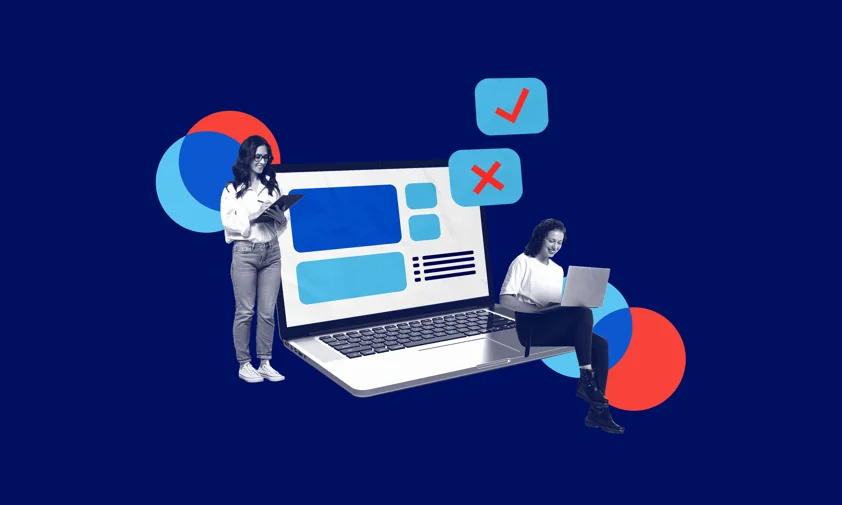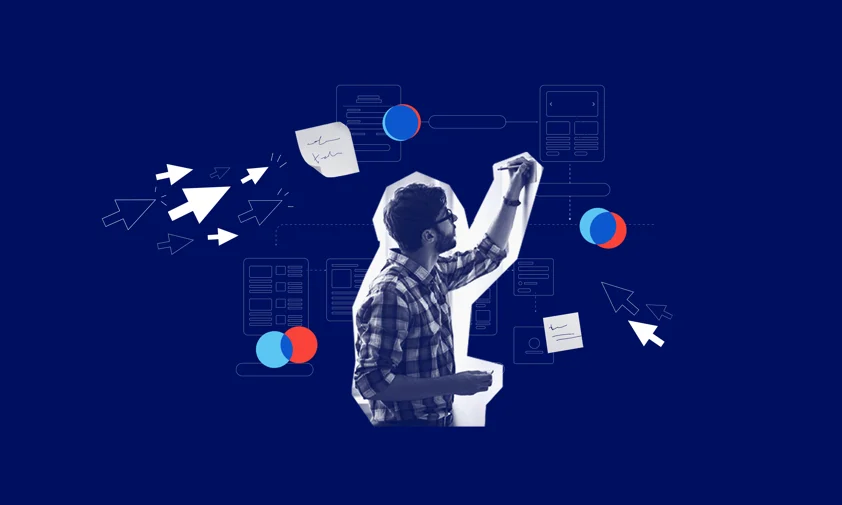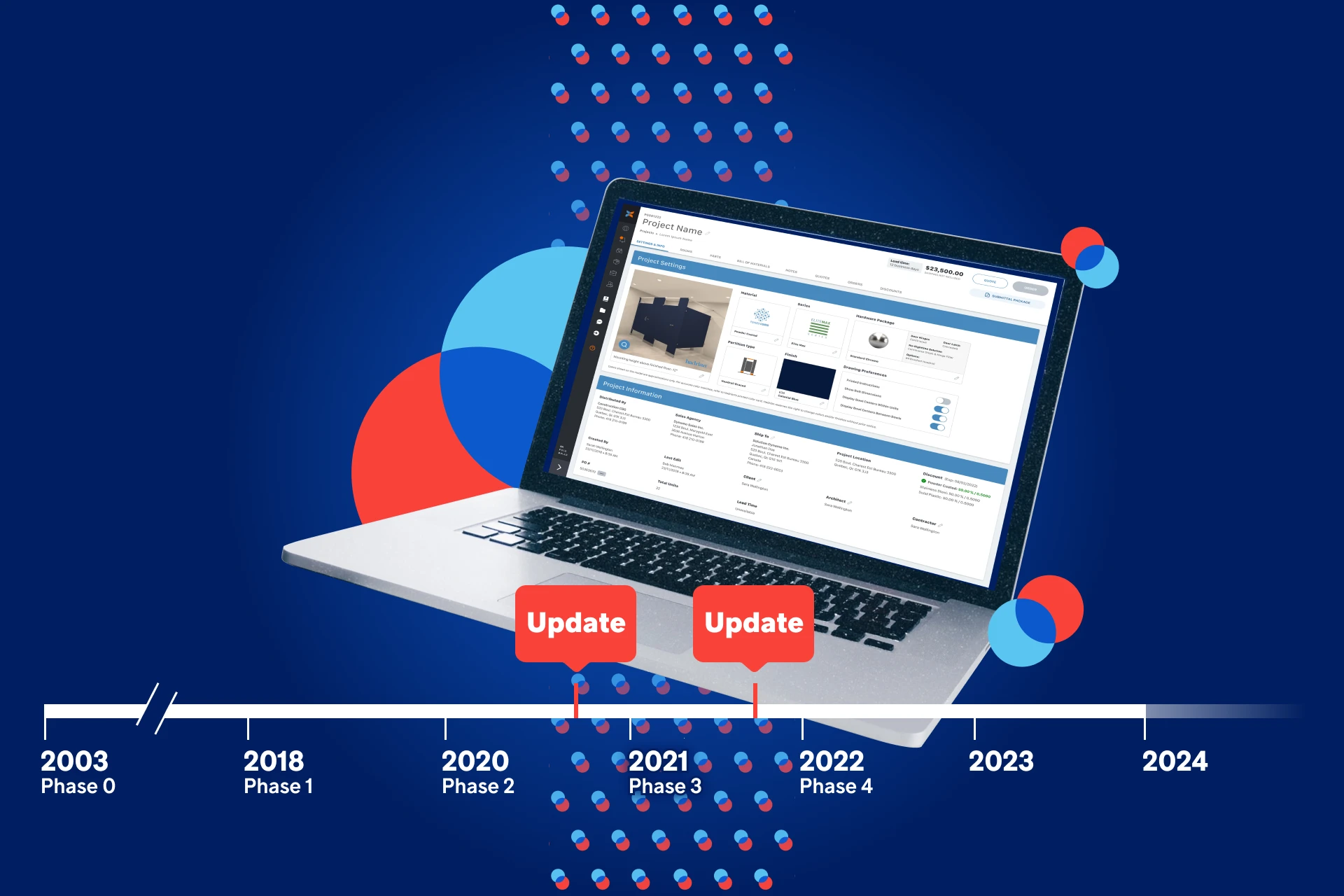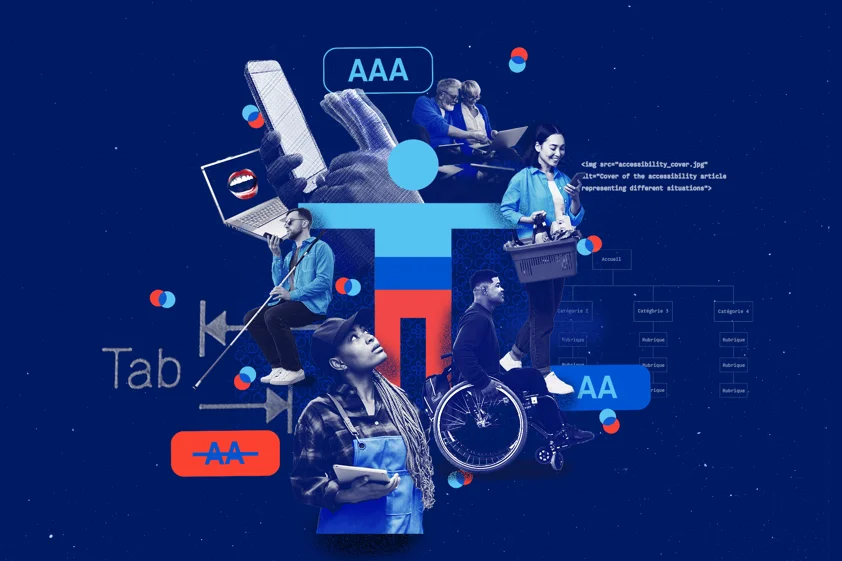Being ‘user-centric’ can allow you to offer a relevant digital solution throughout the customer journey. It’s the reason why right in the design phase, all necessary resources are mobilized to find the users’ needs: research, mapping, competitive analysis, data analysis, etc. These are all answers to finding the typical user profile. In many situations and at each step of the solution’s lifecycle, our experts rely on a method that quickly allows them to measure, to optimize, or to correct a digital solution: usability testing. By following a rigorous process, the goal is to directly observe the way the user navigates in an app, therefore concretely identifying the real issues met, which are also called usability issues. Discover multiple scenarios where usability tests were an ideal solution to meet the users’ needs.
Usability Tests during the Discovery and Strategy Phases
To know where to start, we must know where we stand. Luckily, users are very well placed to inform us on this matter. They know the product, they probably compare it to the competitors’ products, and can share their frustrations with us.
Performing usability tests on an existing product before embarking on a new development phase enables us to validate which priority needs to focus on. The results may surprise you: what is considered the most important part isn’t always what will best meet the users’ needs.
You don’t have an existing product on which to do usability tests? No problem: competitive products can be used to find the future users’ needs. This also allows you to know more about the issues elsewhere, which can give you a competitive advantage. By building your product based on the most important elements and the ones missing from the market, you can get edge ahead of other competitors.
Whether it be for an existing or new product, development is expensive. You can significantly lower risks and costs by gaining concrete knowledge on the market’s needs. Results generated from usability testing are precious insights that enable you to better navigate the tech world.
Usability Testing to Test New Designs
Usability testing is an essential part of the design process. Of course, research, heuristics, and domain expertise will produce the confidence to produce inspiring designs, but it is only through testing these designs with real end users that we can truly understand where the design excels or falls short.
The knowledge gained from testing will have innumerable impacts on your product. For instance, learning that shaving a few seconds off a transaction can increase conversion rates. Improving legibility and comprehension can save on the number of customer service calls. Testing opens the door for qualitative feedback as well.
Even more, we can gain specific insights into how your customers feel about your brand and product.
Usability testing saves money. There is a saying in product development that one should “test early and test often”. It is relatively cheap to change a product while it is being designed. By performing tests on a prototype, we can uncover problems before production, avoiding costly reworks down the road.
Usability Tests to Improve an Existing Product
There are many reasons to run user tests on an existing product. Perhaps your customer service team has flagged a reoccurring issue, you are not hitting KPIs, or your tools are simply becoming dated. It is through testing that we can not only quantify these issues, but also provide context and propose solutions.
The truth is that successful product companies don’t wait for an acute problem before running usability tests. The digital product space is evolving quickly, and it is through incremental optimizations that companies set themselves apart. Testing uncovers user problems and frustrations and will reveal opportunities to improve the overall perceived quality of your product.
Usability Testing to Prevent Stagnation
After you have invested time and money, and after you have considered your users’ needs, your product stands out of the lot. Bam! The work is completed and it’s time to reap what you sowed. But is that really the case?
The efforts deployed to test a prototype, or a minimum viable product (MVP), are actually the first cycle of a series of tests that should continue throughout the product’s lifecycle. Indeed, just as you would regularly perform maintenance tasks on a car or a house, you need to regularly test your product to see what the users think of it.
Users are constantly in contact with all sorts of digital products. Their expectations change over time, and what isn’t a need now might become one in the future. To illustrate, simply think of Uber or Amazon, who changed all the users’ needs in terms of instant payments or ease of request cancellations, etc.
Each industry is evolving, and the competitors’ offer might affect what users expect to see in a product. A single market disruptor can completely change the perception on features that should de facto be part of your product. Blockbuster could tell you many things about the day Netflix muddied the waters in the video rental industry…
Maintaining a relationship with users enables you to quickly see how their needs evolve. This can allow you to improve the existing features, to validate and prioritize the product roadmap by aligning it with the new needs, and to better target the market.
Users value being heard. A product that continuously evolves demonstrate that you care about their needs, that you listen, and that you can adapt to them.
Usability Tests to Complement Analytics
Performance tracking via analytics is an essential part of a healthy product strategy. Data can surface nuanced problems and draw attention to areas of the product that require optimization. However, analytics can only tell us what an issue is. To find a meaningful solution, we also need to understand why an issue occurs.
This is where usability testing comes in. Usability tests will not only flag issues but give the opportunity to observe the context in which the issue occurs, what the user is thinking as they attempt a task, and how they feel when an issue arrives. This qualitative feedback offers us a clearer path to improving the product, rather than simply drawing attention to a problem.
Usability tests can allow you to truly put the user at the heart of your approach and to offer a digital tool that really works. If you have never done these tests, now’s the time to do so! Discover more about the usability testing process today.






